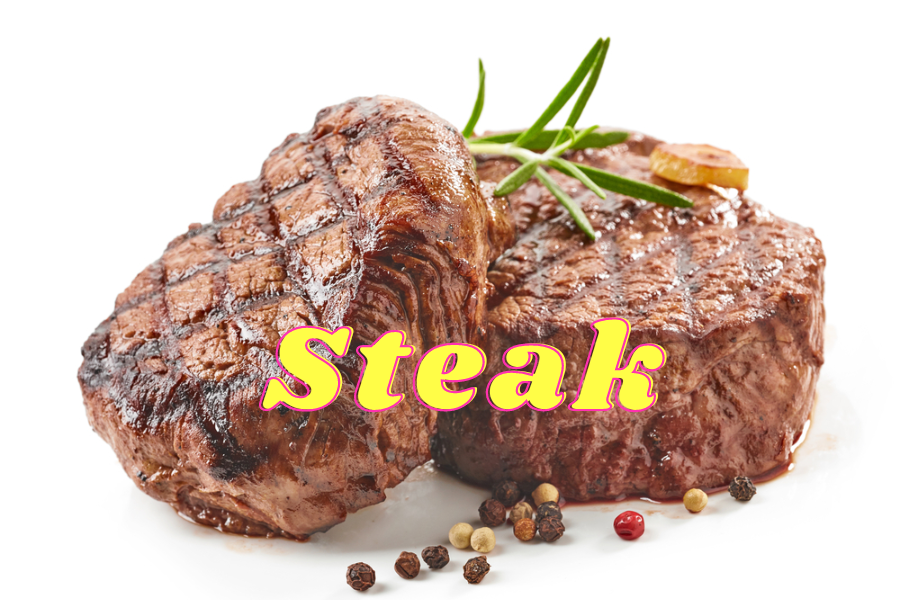Flank Vs Brisket: The Ultimate Showdown For Meat Lovers
When you choose between flank and brisket at the butcher’s counter, you’re entering a barbecue-old culinary dispute. These two slices are regularly compared for flavor, texture, and cooking methods.
Here are extensive comparisons of several beef cuts, including flavor and texture differences. We’ll also teach you each’s best cooking methods. Clear and practical guidance is provided so you’ll know which cut matches your culinary needs by the end.

WHAT MAKES FLANK AND BRISKET DIFFERENT?
The differences between various cuts of meat play a crucial role in enriching culinary experiences when it comes to enjoying in the world of savory meats. Two common beef cuts with distinctive textures, flavors, and uses are flank and brisket.
1. Flank Cut:
The flank cut, taken from the lower abdomen portion of the cow, is characterized by its rich, meaty flavor and long, flat shape. Its noticeable fibers make it great for marinating and grilling. Lean flank cuts allow marinades to penetrate deeply, imparting aromas and tenderizing meat. Slicing the cooked flank against the grain tenderizes it. This cut’s strong flavor excels in fajitas, stir-fries, and London broil.

2. Brisket Cut:
This distinctive cow’s breast cut makes a unique meal. Slow-cooking brisket is popular for its tenderness and marbling. It has lean and fatty parts. This cut demands patience since long, low-temperature cooking melts tough connective tissues and makes it melt-in-your-mouth. Meat and fat taste seductively together. BBQ, corned beef, and smoked brisket are comfort meals.

3. Texture and Cooking Methods:
Flank and brisket cuts differ in texture and cooking methods. Grilling, broiling, and stir-frying keep the flank’s firm texture due to its lean composition. Brisket’s marbling and connective tissues are ideal for slow-cooking like smoking, braising, and roasting. This prolonged heating breaks down collagen, turning tough meat into supple, delicious perfection.
4. Flavor Profiles:
Both slices have a rich, meaty flavor, yet they have different tastes. The robust flavor of flank absorbs marinades and sauces, making it appropriate for a variety of recipes. However, the flavor of the brisket is enhanced by the well-marbled flesh and released fat, leaving a powerful aftertaste.
5. Selecting the Right Cut:
The cut of meat used in a dish depends on how it will be prepared and what results are wanted. Lean flank slices are perfect for stir-fries and quick grilling. However, the connective tissue and marbling in brisket make it perfect for slow-cooking tender, mouthwatering dishes.
HOW TO CHOOSE BETWEEN FLANK AND BRISKET?
Although there are many delicious options available to meat enthusiasts, the flank and brisket slices consistently take the cake. Each of these beef cuts has unique characteristics that can improve your culinary creativity.
1. Cooking Method and Time:
The technique of cooking and the amount of time available determine whether to choose flank or brisket. The best flank cuts for grilling, broiling, and stir-frying are lean and lengthy. Well-marbled brisket, on the other hand, creates exquisite roasts and smoked delicacies if you have the time and desire to slow cook.
2. Texture Preference:
When choosing meat, texture is important. Because of its slim structure, flank stays firm even when cooked quickly and tastes great. Cook brisket for a sufficient amount of time to expose its connective tissues and marbling if you want it to be tender and melt in your mouth.
3. Flavor Profile:
These cuts stand out with their unique flavors. Its rich meaty flavor makes flank a good marinade and seasoning absorbent. However, brisket’s substantial, lasting flavor comes from the superb balance between marbled meat and drained fat.
4. Dish Selection:
The meal you want to make guides your choices. Flank’s form and texture make it a good star for fajitas and stir-fries. Brisket is perfect for thick corned beef, slow-cooked stews, and barbecue.
5. Budget and Quantity:
Financial factors are crucial. Flank is leaner and cheaper due to its decreased fat content. For larger groups or budget-conscious cooking, flank may be better.
NUTRITIONAL COMPARISONS: WHICH IS HEALTHIER?
Understanding the nutritional characteristics of various cuts of meat is essential for making health-conscious selections when choosing meat for your meals. Popular beef cuts that each have their own nutritional profile are the flank and the brisket. Let’s compare the nutritional profiles of flank and brisket to see which one best supports your wellness objectives:

CONCLUSION
In conclusion, both flank and brisket have distinctive flavors and textures that come through when prepared properly. So, which is superior? Everything comes down to your culinary preferences and personal taste. Maybe get the brisket if it’s a formal evening. rapid grill? The flank is on your side. Your decision will either make or break your lunch, so make it carefully.
FAQS
Can I substitute flank for brisket in recipes?
It’s best not to swap them directly. Flank is leaner and cooks quickly, whereas brisket needs time to tenderize. Their different fat content also influences the dish’s flavor and texture.
Is one cut more sustainable or ethical than the other?
Both cuts come from the same animal, so there’s no real edge in sustainability or ethics for one over the other. Your focus should be on sourcing from responsible farms.
How should I store leftover flank or brisket?
Place them in airtight containers and pop them in the fridge. Use within 3-4 days for best quality, or freeze for longer storage without losing much flavor.